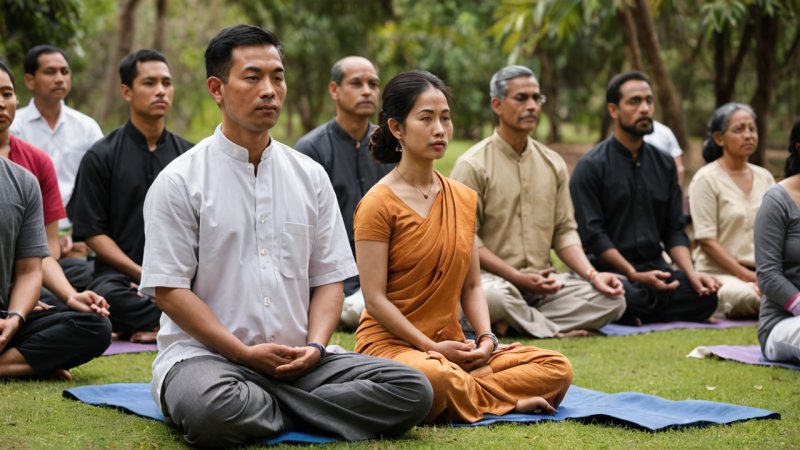In an increasingly complex world, community safety has become a paramount concern for many neighborhoods, cities, and nations. Various strategies have emerged to address the issues of violence, crime, and social unrest, including both secular and religious approaches. Among these, meditation and traditional religious practices stand out as two distinct yet impactful methodologies. This article will explore the pros and cons of each, examining how they contribute to community safety and social cohesion.
Meditation: A Modern Approach to Community Safety
Meditation, often associated with mindfulness and self-awareness, has gained traction as a tool for improving individual mental health and fostering community well-being. Its application in community safety is rooted in the belief that a calm mind leads to a peaceful society.
Pros of Meditation
- Stress Reduction: Meditation has been scientifically proven to reduce stress and anxiety, which can lead to lower instances of violence and aggression in communities.
- Enhanced Empathy: Practicing mindfulness can foster empathy and compassion among individuals, promoting understanding and reducing conflicts.
- Community Programs: Many organizations offer community meditation programs, creating safe spaces for individuals to gather, share experiences, and build connections.
Cons of Meditation
- Accessibility: While meditation is accessible, not everyone may resonate with its practices, potentially leaving some community members disengaged.
- Short-Term Focus: Meditation often emphasizes individual well-being, which may not directly address systemic issues such as poverty and inequality that affect community safety.
Traditional Religious Practices: A Time-Honored Approach
Traditional religious practices have long been integral to community life, providing moral guidance, social cohesion, and a sense of belonging. Many faith traditions emphasize community service, charity, and social justice as cornerstones of their teachings, which can be directly linked to community safety.
Pros of Traditional Religious Practices
- Community Engagement: Religious institutions often serve as hubs for community engagement, bringing people together for worship, social events, and charitable activities.
- Strong Moral Framework: Many religions provide a robust ethical framework that encourages individuals to act in ways that promote community welfare and safety.
- Support Networks: Religious communities often offer support to their members in times of crisis, fostering resilience and solidarity.
Cons of Traditional Religious Practices
- Exclusivity: Some religious practices can be exclusive, potentially alienating non-believers or those from different faith backgrounds.
- Dogmatism: Rigid adherence to certain beliefs may lead to conflict, especially in diverse communities where multiple faiths coexist.
Comparative Analysis of Impact on Community Safety
When comparing meditation and traditional religious practices in the context of community safety, several key differences emerge that highlight their unique contributions.
Focus and Approach
Meditation primarily focuses on individual mental health and personal development, which can indirectly lead to a safer community through increased empathy and reduced aggression. In contrast, traditional religious practices often emphasize community engagement and collective well-being, providing a more direct approach to fostering social cohesion and safety.
Community Involvement
Community meditation programs tend to attract individuals interested in personal growth, potentially limiting broader community engagement. Conversely, religious institutions often involve a diverse range of community members, creating opportunities for collective action and support.
Long-Term vs. Short-Term Solutions
Meditation may offer short-term relief from stress and anxiety, but it does not address underlying social issues that contribute to community safety. Traditional religious practices, on the other hand, often include long-term commitments to social justice and poverty alleviation, providing a more holistic approach to improving community safety.
Conclusion
In conclusion, both meditation and traditional religious practices play vital roles in enhancing community safety, albeit in different ways. Meditation offers valuable tools for individual mental health and empathy, while traditional religious practices foster community engagement and a collective sense of responsibility. For a comprehensive approach to community safety, it may be beneficial to integrate both methodologies, allowing for personal growth alongside a strong communal framework. Ultimately, engaging in both practices can inspire individuals to take action, fostering a safer and more inclusive society.






